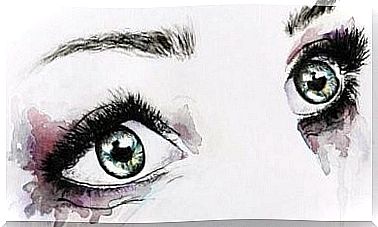Cancer Patients: “Heroes Of Our Time “
Cancer knocks on our door when no one expects it. The disease enters the stage every day. It’s the face of a coin we’ll never see. It all starts with confirmation of a diagnosis. Then hundreds of questions attack without pause: why me? We try to cling to life, but there are times when the pain hits too hard. Helping cancer patients is complicated.
Cancer has consequences for a person’s mental and physical health, even after treatment is stopped. The most common symptoms are fatigue and mental stress derived from the impact of the diagnosis and the intervention process. Other common problems are depression and anxiety, physical weakness and attention and memory problems.
The tyranny of social support
Nothing is as unique as pain. Nothing is as personal as that experience. As Thiebault said: “Injuries can be avoided, pain can not be avoided”. Not all minds are able to integrate and deal with emotional or physical pain. And here is the paradox: the body remains silent when it does not hurt, but the mind hurts when it is quiet. Cancer is a tough battle, and respect for the patient’s right to choose how they want to face it is important. It is the same as letting them communicate all their emotions, including feelings of defeat and exhaustion.
We often use expressions of support for the purpose of providing encouragement and comfort. But without realizing it, we sometimes produce demanding expectations instead. “You are a winner”, “do not worry, you are strong”. In some cases, by showing our love with the best of intentions, we impose on them the image of the “sick optimist.” As if cancer patients and relatives are committed to facing the disease with all their enthusiasm and strength. Cancer is a hugely difficult experience, you do not always have to put on a happy smile. Leave room for pain and fear.
Supporting and giving love is very important, but we must be careful about what we say, so we do not give the patient an extreme example to follow and put more emphasis on their shoulders. It is a mistake to turn these people into “heroes” when we do so by removing them from their human condition. The burden of the disease is enough. They need our company and support. We need to recognize their pain, accept their feelings, and appreciate their efforts. We need to listen and meet their needs. This is the best help we can offer.
Equally important is giving your family members room to be angry, tired and in pain. Do not push them into a corner by making them feel that they should be “proud” of being parents, siblings, children, etc. of “such a fighter”. Of course we should give support, but we should give them space to fall and get up again.
Cancer as a threat to survival
Finding out if a cancer diagnosis creates a strong stress response. There are six main fears for cancer patients: death, being addicted, disability, interruptions in life, lack of comfort and malformation. It is essential to receive information. Cancer patients who receive sufficient information tailored to their needs, have better control in the treatment process and are more cooperative and active through treatment. In this sense, the greater the uncertainty, the greater the discomfort.
This information must be realistic. It is a main goal to resolve any doubts that the person has regarding the process. However, one must refrain from generating unfounded expectations or idealized hopes. Sometimes this happens when we feel we have to say something to convey unconditional support so that we do not take into account what we say. Remember that it is not always necessary to say something. To listen to the person’s needs and respect their time and silence is a way to show appreciation and affection for.
Coping styles in cancer patients
Sometimes it is not easy to understand the way our loved ones react to their illness. It is even difficult to understand our own actions when they encounter such painful and complex moments. The control over many situations disappears from us, we do not know what to do, we become frustrated and try to find out what the person is thinking or feeling. After all, we do not want them to suffer. We do not want to suffer.
How the patient handles the disease has to do with the coping style that the person has. These styles are determined by the patient’s thought patterns and personality patterns. In general, there are 5 mastery styles:
Confrontation
These people see the disease as a challenge. “I have to be able to maintain my life that I have had until now. I have to decide what I can do. ” Even the diagnosis itself becomes a challenge. They assess the control they may have over the situation and develop an optimistic forecast. They try to get a lot of information. Practical and useful information, not excessive information. They are looking for what will help them take an active role in the process.
People with this style deny the negative things the disease can cause them. “It’s not that bad, everything will remain the same. There is nothing to worry about “. They try to minimize how they perceive the threat, and reduce its significance. They do not focus their capacity on control, like those who have the confrontational style. They make a manageable prognosis and underestimate the effects of the disease. People with this coping style can turn to drug abuse as an escape route.
Fatalism
Those with this coping style add an attitude of passive acceptance. “Everything is in the hands of the doctors”. “God has determined my destiny.” They are resigned. They do not see the threat as too serious and place the control outside themselves (with doctors, God, etc.). They are patients who do not use active strategies to cope with the situation and have difficulty adapting.
Helplessness
The patient feels overwhelmed. “There is nothing I can do but wait to die.” They see the diagnosis as a very serious threat, a great loss. Thus, they feel that they have no control over their situation. They do not even believe in controlling third parties as doctors. The patient with this style can give up good hygiene, food, etc. Mood disorders are also very common in this group.
Anxiety
This group experiences a strong reaction of worry and anxiety. “I have to be on the lookout for symptoms, I have to learn everything I can.” The patient perceives a great threat and constantly doubts his control over the situation. In the same way, they are very uncertain about the future. As a result, there is a constant need for reassuring information. This style can be accompanied by anxiety and somatoform disorders.
The quality of life of cancer patients
There are three basic criteria for understanding quality of life. First, it is completely subjective. Each person is unique and values their quality of life based on their experiences, ambitions and individual preferences. It is also multidimensional. That is, we must take into account the major consequences of the disease and its treatment. In the end, it’s temporary. The quality of life depends on the present. It changes with the situation.
Quality of life has always been closely linked to the disease. Cancer patients will live, not survive. This means taking into account the level of activity and autonomy that the patient has. In the same way, it is important to assess the physical impact of the disease and the psychological state (anxiety, depression, self-esteem, etc.).
We can not forget the social dimension. It is very important to feel happy with social relationships and to have a support network. Equally important is spiritual life. Finally, material resources such as money and medical assistance are important.
In short, it is important to take into account the person’s needs. Respect and help to make decisions based on their assessments and desires will help them deal with difficulties and overcome adversity. The problem is not just adding years to life, it’s about adding life to the years.









